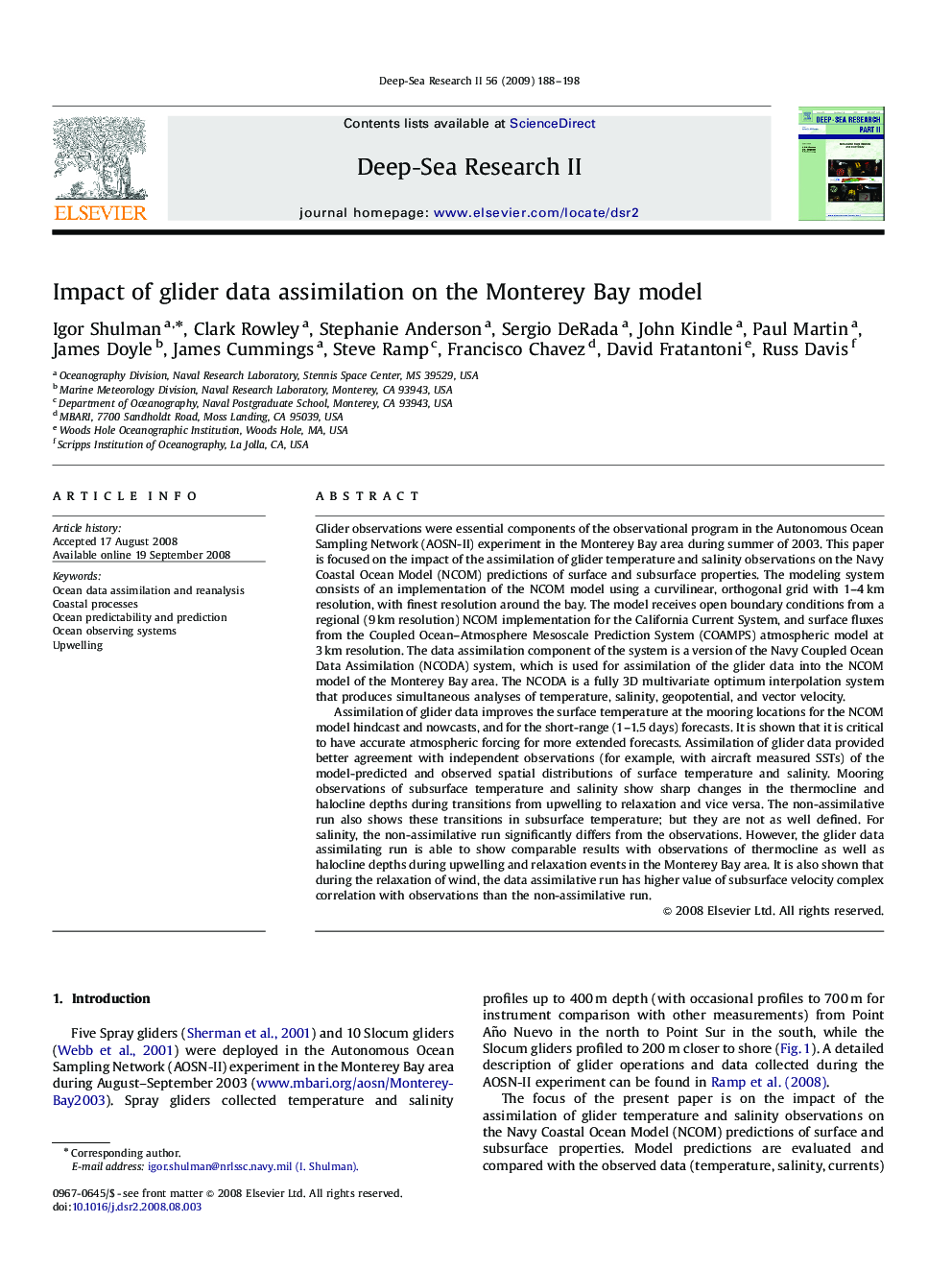| Article ID | Journal | Published Year | Pages | File Type |
|---|---|---|---|---|
| 4537244 | Deep Sea Research Part II: Topical Studies in Oceanography | 2009 | 11 Pages |
Abstract
Assimilation of glider data improves the surface temperature at the mooring locations for the NCOM model hindcast and nowcasts, and for the short-range (1-1.5 days) forecasts. It is shown that it is critical to have accurate atmospheric forcing for more extended forecasts. Assimilation of glider data provided better agreement with independent observations (for example, with aircraft measured SSTs) of the model-predicted and observed spatial distributions of surface temperature and salinity. Mooring observations of subsurface temperature and salinity show sharp changes in the thermocline and halocline depths during transitions from upwelling to relaxation and vice versa. The non-assimilative run also shows these transitions in subsurface temperature; but they are not as well defined. For salinity, the non-assimilative run significantly differs from the observations. However, the glider data assimilating run is able to show comparable results with observations of thermocline as well as halocline depths during upwelling and relaxation events in the Monterey Bay area. It is also shown that during the relaxation of wind, the data assimilative run has higher value of subsurface velocity complex correlation with observations than the non-assimilative run.
Related Topics
Physical Sciences and Engineering
Earth and Planetary Sciences
Geology
Authors
Igor Shulman, Clark Rowley, Stephanie Anderson, Sergio DeRada, John Kindle, Paul Martin, James Doyle, James Cummings, Steve Ramp, Francisco Chavez, David Fratantoni, Russ Davis,
